International Symposium ‘Gift of Nam June Paik 9′ 《Coevolution: Cybernetics to Posthuman》
Overview
Period
2017.07.08, 07.15, 07.22, 07.29 (4 Times) / Every Saturdays 13:00 a~ 17:00
Venue
Lecture 1-3(Nam June Paik Art Center), Lecture 4(Auditorium of Gyeonggi Provincial Museum)
Hosted and Organized by
Nam June Paik Art Center, Gyeonggi Cultural Foundation
Admission
Free
Register
Register is closed
* The venue of lecture 4 has been changed to Auditorium of Gyeonggi Provincial Museum to accomodate more people. Please register on-site.
* The venue of lecture 4 has been changed to Auditorium of Gyeonggi Provincial Museum to accomodate more people. Please register on-site.
Introduction
The International Symposium ‘Gift of Nam June Paik 9’ will be held at Nam June Paik Art Center from 8th July to 29th July, every Saturdays under the title Coevolution: Cybernetics to Posthuman. Nam June Paik defined ‘Cybernetics’ as various relationships between humans and machines, art and machines, art and technologies, humans and art and even among diverse arts(artists). He understood that it would generate varying combinations out of these relationships. Nam June Paik put his ideas about cybernetics into artistic practices: he performed Robot Opera with Robot K-456 he himself had made and manipulated, expressing simply and playfully the complicated relationship between humans and machines.
‘Cybernetics’ as a discipline was first introduced by Norbert Wiener, as he attempted to explain the regulative relationship between humans and machines. When a number of scholars gathered and discussed on the theme at Macy Conferences, however, Cybernetics dynamically developed into an emerging epistemological concept. Nam June Paik’s theoretical ideas and artistic practices correspond to (or lead ahead) the few steps of the radical development of Cybernetics achieved throughout the history: the first wave Cybernetics, which was at the level of mechanic feedback, and the second wave Cybernetics, which characterizes as reflexity and self-generation and the third wave Cybernetics, at the center of which is emergence, are all relevant. These steps express a posthuman evolutional point of view on how the boundary between humans and machines is deconstructed.
Our symposium looks into a contemporary approach to the phased developmental history of ‘Cybernetics’ and at the same time analyzes Nam June Paik’s works on machines and art. Firstly, We will explore interesting topics on human and control of machine by addressing ‘sudden unintended acceleration as a psychosis,’ while looking over the war-related backgrounds of the birth of cybernetics and how the discipline has been settled as a general paradigm through the Cold War. We will also discuss cybernetics capitalism and the new class disintegration, and the network environment and proletariat solidarity strategies against it. After that, we will suggest epistemological frameworks with which to interpret Nam June Paik’s lesser known video works including The Rain in My Heart, continuing the conversations with contemporary artists. Lastly, there will be a discussion on Nam June Paik’s robots from the posthuman point of view, focusing on ‘externalization of perception’ and ‘the ensemble of humans and machines.’
We structured our symposium so that two or three presenters, who share similar interests, can have in-depth discussion on their themes, forgoing a round table session at which all the presenters gather on the same day. Therefore, the symposium may look like a series of lectures. We expect this Symposium will develop into a dynamic and contemporary discursive space where presenters from diverse background freely discuss in small spaces. We hope that each participant exists as a subjective observer and there will be sensitive and exciting reactions within that space.
‘Cybernetics’ as a discipline was first introduced by Norbert Wiener, as he attempted to explain the regulative relationship between humans and machines. When a number of scholars gathered and discussed on the theme at Macy Conferences, however, Cybernetics dynamically developed into an emerging epistemological concept. Nam June Paik’s theoretical ideas and artistic practices correspond to (or lead ahead) the few steps of the radical development of Cybernetics achieved throughout the history: the first wave Cybernetics, which was at the level of mechanic feedback, and the second wave Cybernetics, which characterizes as reflexity and self-generation and the third wave Cybernetics, at the center of which is emergence, are all relevant. These steps express a posthuman evolutional point of view on how the boundary between humans and machines is deconstructed.
Our symposium looks into a contemporary approach to the phased developmental history of ‘Cybernetics’ and at the same time analyzes Nam June Paik’s works on machines and art. Firstly, We will explore interesting topics on human and control of machine by addressing ‘sudden unintended acceleration as a psychosis,’ while looking over the war-related backgrounds of the birth of cybernetics and how the discipline has been settled as a general paradigm through the Cold War. We will also discuss cybernetics capitalism and the new class disintegration, and the network environment and proletariat solidarity strategies against it. After that, we will suggest epistemological frameworks with which to interpret Nam June Paik’s lesser known video works including The Rain in My Heart, continuing the conversations with contemporary artists. Lastly, there will be a discussion on Nam June Paik’s robots from the posthuman point of view, focusing on ‘externalization of perception’ and ‘the ensemble of humans and machines.’
We structured our symposium so that two or three presenters, who share similar interests, can have in-depth discussion on their themes, forgoing a round table session at which all the presenters gather on the same day. Therefore, the symposium may look like a series of lectures. We expect this Symposium will develop into a dynamic and contemporary discursive space where presenters from diverse background freely discuss in small spaces. We hope that each participant exists as a subjective observer and there will be sensitive and exciting reactions within that space.
Schedule
| Date | Time | Program Title | Speaker |
|---|---|---|---|
| 7/8 (Sat) |
13:00-14:30 |
Sudden Unintended Acceleration as a Psychosis of Machine |
Youngjun Lee (Machine critic, Professor of Kaywon University of Art & Design) |
| 14:30- 16:00 |
Cybernetics and Later, The History of the Integration and Simulation for Processing Human Elements in Circuits |
Kyuheun Ko (Adjunct Professor of Sung Kyun Kwan University) |
|
| 16:00-17:00 | Discussion | – | |
| 7/15 (Sat) |
13:00-14:30 | Cybernetics and Cyborg: Some Philosophical Questions |
Jinkyoung Lee (Professor of Seoul National University of Science and Technology) |
| 14:30- 16:00 | Cognitive Ecological Outline of the Strategy for Social Solidarity in the Age of Artificial Intelligence | Kwanghyun Sim (Professor of School of Visual Arts, Korea National University of Art) |
|
| 16:00-17:00 | Discussion | – | |
| 7/22 (Sat) |
13:00-14:30 |
Cybernetic Lyricism: Gregory Bateson, Nam June Paik, and the Mind as Conjunctive |
Seongeun Kim (DPhil, Leeum, Samsung Museum of Art) |
| 14:30- 16:00 | Artist Talk |
Taeyeun Kim (Artist), Špela Petrič (Artist) |
|
| 16:00-17:00 | Discussion | – | |
* Korean-English Translation |
|||
| 7/29 (Sat) |
13:00-14:30 |
Transductive Ensemble of Nature, Human, and Technical Objects: The Techno–Aesthetics of Nam June Paik and Posthuman |
Jaehee Kim (Professor of the Ewha Institute for the Humanities (EIH), Ewha Womans University) |
| 14:30- 16:00 |
Inside Out, Outside In: Technical Media as Exteriorizations of Cognition and the Art Installations of Nam June Paik |
N. Katherine Hayles (Professor of Literature at Duke University) |
|
| 16:00-17:00 | Discussion | – | |
*Korean-English Translation |
|||
Speakers
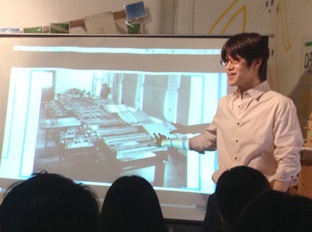
Gyuheun Ko (Adjunct Professor of Sung Kyun Kwan University)
His major is science of arts but he wrote his doctoral dissertation under the title of A Study on Man-Machine Convergence Drive Since the Second World War, which is quite irrelevant with his study area. He is now working on the interactive relationship between humans and machines in terms of ‘the historiography of interface.’ While interface can be considered as time and space where humans and machines integrate, merge and become one with each other, his tentative conclusion is that all interface in our everyday lives exist in order to shoot all information inside and outside the body out into networks. Among his publications are A study on W. R. Ashby’s Artificial Brain, Homeostat: Focusing on His Position in the History of Cybernetics (2016), A Brain Related to the Early History of the Internet, and the Problems with DARPA-Supported Neuro-Engineering Projects referencing <Mind Wars> (2014) and The Shortest Times when Machines that Solve Complex Problems were the Most Transparent: the Story just Before the Computer was Sealed with a Black Box (2014).
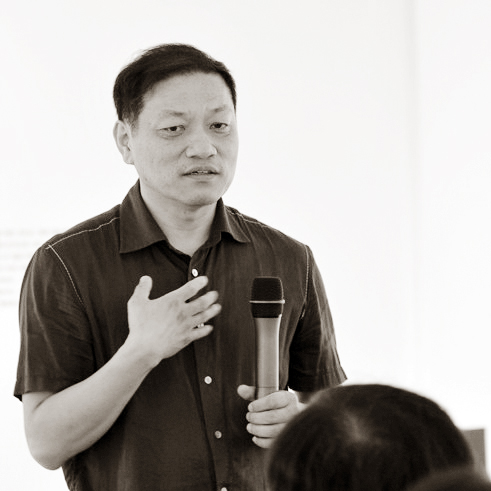
Youngjun Lee (Machine critic, Professor of Kaywon University of Art & Design)
He is a machine critic and professor in the intermedia art department at Kaywon University of Arts. He loves machines more than humans. His joy and mission in life is to go and meet exquisite and heavy machines. He is interested in all things that are peculiarly structured and built with rare materials, and those which move and function, from sawing machines to high-tech jet engines. He was originally a photography critic but changed his course with a desire to explain his great curiosity about machines. As a result, he has written a number of books: Machine Criticism: a Humanist’s Walk on Machine Civilization (2006), Pegasus 10000 Miles (2012), and Jo Choon Man’s Heavy Industry (2014). He also wrote a book on photography: Critical Eyes (2008), and a book on image criticism: The Bright World of Image Criticism (2012). The exhibitions he organized include Photos Look at Us (1999), Western Manners for Space (2007), XYZ CITY (2010), Seoul Photo Festival 2010, Han Yong Kim The Birth of Consumers (2011), and Space Life (2015).
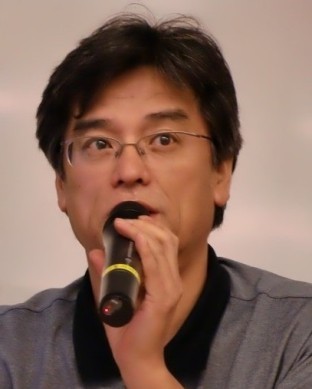
Kwanghyun Shim (Professor of School of Visual Arts, Korea National University of Art)
His MA thesis focuses on Adorno’s aesthetics. After he finished his doctoral course, he has served as professor of School of Visual Art, Seoul National University of Arts. Cultural research on the complicated interactive relationship between modern society and art, new modes of perception in the Ubiquitous Era, and aesthetic research on the interaction of media technology are his interest areas. His publication includes Postmodern Politics and Cultural Study (1998), Cultural Society and Cultural Politics (2003), Exci~ting Korea (2005), and Fractal (2005) and a number of academic essays.
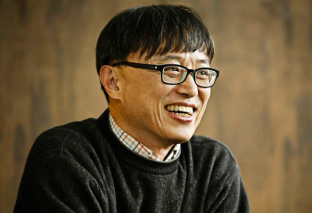
Jinkyoung Lee (Professor of Seoul National University of Science and Technology)
His original name is Taiho Park. When he published Social Structure Theory and the Methodology of Social Study and Science in 1987, his pen name Jinkyung Lee became more famous than his original name. He entered university when the ghosts of the citizens of Kwangju were still hovering in the air, which possessed and caused him to spend his university days in the street instead of classrooms. As a result, he became a Leninist, wanting to build an ‘organization of professional revolutionists.’ In 1990 and 91, thanks to the sudden collapse of socialism that struck upon the socialist in prison, he saw the abyss. Since then, he has been living, thinking and writing, in pursuit of the answers to the questions that faced him at the time. The questions began from his doubt about socialism and ‘modernity,’ developed into an exploration of the nature of a community, and is now transforming into a deep thinking about ontology. While Marxism and Modernity and The Birth of Modern Residential Space deals with the first questions, Communism expresses the critical transition from the exploration of the nature of a community to ontology. Writing Ontology of the Rebellious was his own effort to describe his ontological thinking. Marx, Foucault and Deleuze/Guatari provided important sources for his explorative mind. Their ideas, however, must have evolved into different forms mingled with his questions. Deleuze/Guatari’s Nomadism, which is a lecture note on A Thousand Plateaux, Marx in Capital beyond Capital and Marxism in the Future are the examples. Recently, he wrote A Philosophy Class for Life, which contains his belief in ‘ethics of beyond’; Exceptional Classics, which is a collection of exceptional analysis of Korean classic literature; and Philosophizing Buddhism, which reinterprets Buddhist philosophy as modern philosophy. Now he is in a transitive phase from ‘the ontology of the existing’ toward ‘the ontology of existence,’ looking for his way again. As an effort to do so, he is preparing a book about Sijong Kim’s poetry and ideas. He is an active member of ‘Suyunomo 104,’ an intellectual community, and professor at Seoul National University of Science and Technology.
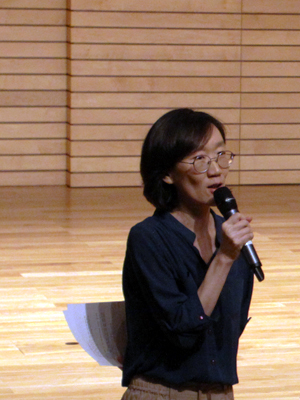
Seongeun Kim (DPhil, Leeum, Samsung Museum of Art)
She is an anthropologist specializing in museology and contemporary art, Seong Eun Kim works on transmedia and transdisciplinary programs with curatorial research interest in the intersection of the artist’s, the curator’s and the anthropologist’s practices, the material agency of media art, and the body and sensorial experiences in museums. Having worked in Nam June Paik Art Center (2011-2014), Kim now works in Education & Public Programs, Leeum. Recently she organized Intemedia Theater ‘Constellation of Things’(2015), ‘World Citizenship’ (2016) series, and public programs in conjunction with the exhibitions Olafur Eliasson (2016) and ARTSPECTRUM (2016). Among her publications are Man-Machine-Nature, from Critique to Composition: Bruno Latour, Nam June Paik and Ecological Thinking (2011), Intermedia, Interscience: Homo Cyberneticus Evolve (2012), Building Up an Academic Discipline on Material Assemblages: Modern Europe’s Museum Developments and Museology (2014), Entropy of Crossing Boundaries and Creating Relationships: Sophie Taeuber-Arp and Hannah Hoch’s Dada (2015), and Questioning Alterity and Modernity by the Art Museum: Tate Britain’s Museology (2016).
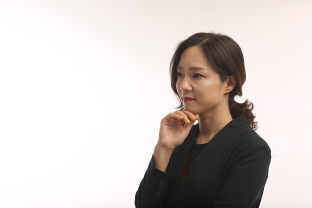
Taeyeun Kim (Artist)
She paints and sculptures, visualizing virtual life images. She believes that life consists of microscopic algorism which is hidden, and that the relationships consisting of such algorism express themselves in shapes, revealing themselves to the outside world. Therefore, she has been interested in the process of visualizing artistically the diverse yet invisible microscopic world of life. For the past few years, she has involved in interdisciplinary projects coworking with architects and scientists. Especially, she injected and cultivated her DNA in a plant called Arabidopsis. This work visualizes what is common between plants and humans through the circulation of green liquid, reflecting the way blood circulates in human body. In 2017, she participated the exhibition Strange Sense of Colors: the temperature of blood and had a solo exhibition at Youngeun Art Museum.
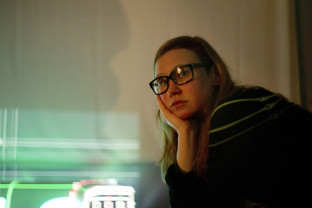
Špela Petrič (Artist)
She is a Slovenian new media artist and scientific researcher currently based in Amsterdam, NL. Her artistic practice combines natural sciences, new media and performance. While working towards an egalitarian and critical discourse between the professional and public spheres, she tries to envision artistic experiments that produce questions relevant to anthropology, psychology, and philosophy. She extends her artistic research with art/sci workshops devoted to informing and sensitizing the interested public, particularly younger generations. In particular, she is interested in all aspects of anthropocentrism, the reconstruction and reappropriation of scientific knowledge in the context of cultural phenomena, living systems in connection to inanimate systems manifesting life-like properties, and terRabiology, an ontological view of the evolution and terraformative process on Earth. Her work has been shown at many festivals, exhibitions and educational events in Slovenia and around the world Kapelica Gallery (SI), (Touch Me Festival (HR), Pixxelpoint (IT), European Conference on Artificial Life (IT), Playaround (TW), Harvard (US), Ars Electronica (AT), National Center for Biological Sciences (IN), HAIP (SI), Arscope (DE), Mutamorphosis (CZ), Galleries de la Reine (BE)…).
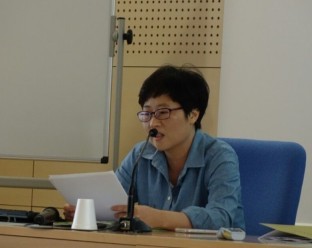
Jae-Hee Kim (Professor of EIH, Ewha Womans University)
She is Research Professor at the Ewha Institute for the Humanities (EIH) of Ewha Womans University in Seoul, Korea. She received a Ph.D in Philosophy from Seoul National University in Seoul. Her research interests are the 20th-century French philosophy, philosophy of technology, and Posthumanism. Her main books are Simondon’s philosophy of technology (2017) in Korean and Henri Bergson’s Conception of Virtual Unconscious (2010) in Korean. Her main translations are Gilbert Simondon’s Du mode d’existence des objets techniques (2011) into Korean and Jacques Derrida & Bernard Stiegler’s Echographies of Television (2002) into Korean. Her published articles include Deleuze’s Expressive Materialism (2012), A Blueprint for Thinking upon the Posthuman Society: Gilbert Simondon’s Techno-Politics (2014), How Can We Become Posthuman Subject? (2014), among others (in Korean). She has also published numerous articles on the 20th-century French Philosophy, Philosophy of Technology, and Posthumanism.
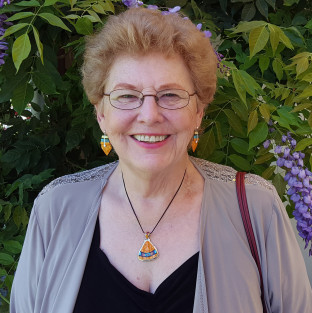
N. Katherine Hayles (Professor of Literature, Duke University)
She teaches and writes on the relations of literature, science and technology in the 20th and 21st centuries. Her print book, How We Think: Digital Media and Contemporary Technogenesis, was published by the University of Chicago Press in spring 2012. Her other books include How We Became Posthuman: Virtual Bodies in Cybernetics, Literature and Informatics (1999), which won the Rene Wellek Prize for the Best Book in Literary Theory for 1998-99, and Writing Machines, which won the Suzanne Langer Award for Outstanding Scholarship. She is Professor and Director of Graduate Studies in the Program in Literature at Duke University, and Distinguished Professor Emerita at the University of California, Los Angeles.
Comments [0]
Leave a comment
You must be logged in to post a comment.
















